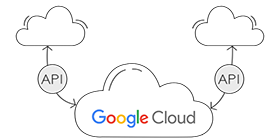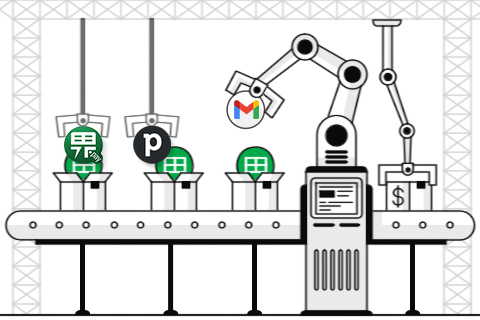Workflow Automation
API Integration Services

Automatically Integrate Data, Reduce Labor Costs, and Create Cost Advantages
In the past, if we wanted to book accommodation, we had to call the hotel and ask if a room was available. Now we can check the availability of the room through the API and book the room directly through the application.
The API integration can be used at all levels of work, but we focus on internal processes and the enterprise platform as the main service object. A large number of tedious manual processes are replaced by APIs, reducing the cost of processing time and the error rate. The API can also automate information integration. Internal data is not constrained by the use of different platforms, achieving true internal information integration.

Do you have these problems?
- The data is scattered across multiple platforms. When there is a change, it is very time-consuming to log into each platform to update the data accordingly.
- To view data, you have to go to different backends to adjust the data, and the data is not updated in real time.
- Buying a variety of software is supposed to make the work process more convenient, but the data is disorganized and can not be integrated, causing unnecessary problems for users.
3 Keys to Success
If You Want to Improve Your Company’s Value Chain, Start by Optimizing Inefficient Internal Processes.
➤Use API to automatically input data to save on labor and time spent on common issues.
➤Use API technology to connect data on different platforms so that data can be centrally managed and easily accessed.
➤Connect the platforms or software used to add value to each platform and increase efficiency.
The First Key
With Automation, There Is No Longer a Need to Enter Data Manually
API can be understood as a communication bridge between different platforms or software that supports the transfer of data so that manual, repetitive tasks such as typing, copying, pasting, etc., can be handled by API. Let us take the example of “invoicing”: the finance department staff has to manually enter the data, edit the header, select the date, and even manually copy and paste the information into the electronic invoicing platform, which takes a lot of time and is error-prone.
What if the invoice issuance can be entered automatically, the program can automatically read the information, such as the compilation and header, and paste it directly into the invoicing platform for issuance. You do not need to enter any information manually during the whole process. You can open invoices with just one button, and it’s no problem to open multiple invoices at the same time. This saves time and effort and significantly reduces the error rate in manual operations.
The Second Key
One Platform Can Search and Manage All Data Without You Having to Switch Software or Platform Back and Forth
In addition to automating input as mentioned above, the API can also be used for data access and management. Before connecting to the API, you need to open a specific worksheet to view sales reports or performance data. If you want to compare different time intervals, you need to open multiple copies. However, after connecting to the API, you only need to open one worksheet to view the data.
API can integrate data from different platforms and spreadsheets into one interface (e.g. Google Sheets), and you can see the data you needed in a single interface. You do not have to keep switching back and forth between spreadsheets or platforms, and you do not have to spend manpower to create a summary table with the integrated data. All this effort is eliminated, and the program can automatically synchronize the data for you, letting you see it in real time.
The Third Key
Systematically Integrate Internal Operating Platforms to Improve the Company’s Internal Value Chain.
Can the existing internal operating system also use the API? Yes, it can be integrated as long as the system has an open API. In the case of the phone system and CRM system, which are most commonly used by different enterprises, one was originally used only to make and receive calls, and the other was used only to record customer status and information. However, when the two systems are integrated via an API, the customer name and call history can be automatically captured in the CRM when the call is received. In this way, similar effects can be achieved without having to import CTI, and the existing system can be used more effectively.
APIs can also be very useful for cross-departmental integration! When the website receives a new order, it can automatically forward the order information to the internal communication platform (e.g., Slack, Line, etc.) to notify individual sales reps that there is a new case to process; then this information can be automatically uploaded to the sales management platform. Managers can thus capture the overall status of the business in real-time. Of course, they can also update the information on the summary table of the regular meeting, so that the boss and the advertising team and other departments can share the latest information so that relevant decisions or changes in advertising strategy can be made faster. Not only is it instantaneous, but employees no longer have to communicate back and forth, which reduces the cost of internal communications, enables more effective transmission and use of information, and makes internal operations more valuable.
Is API Integration is Suitable for My Business?
4 Steps for Implementation
Understand the Customer Needs
Our specialist will contact you by phone or email to understand your needs.
Planning and Demo
After the discussion between the customers and the engineer, the customers will need to confirm whether the DEMO API module meets the requirements
Quotation and Confirmation
We will provide you with the best solution and a cost estimate based on your business requirements.
Acceptance and Delivery
After confirmation, the contract will officially start.
Click to Learn More About the Pricing!